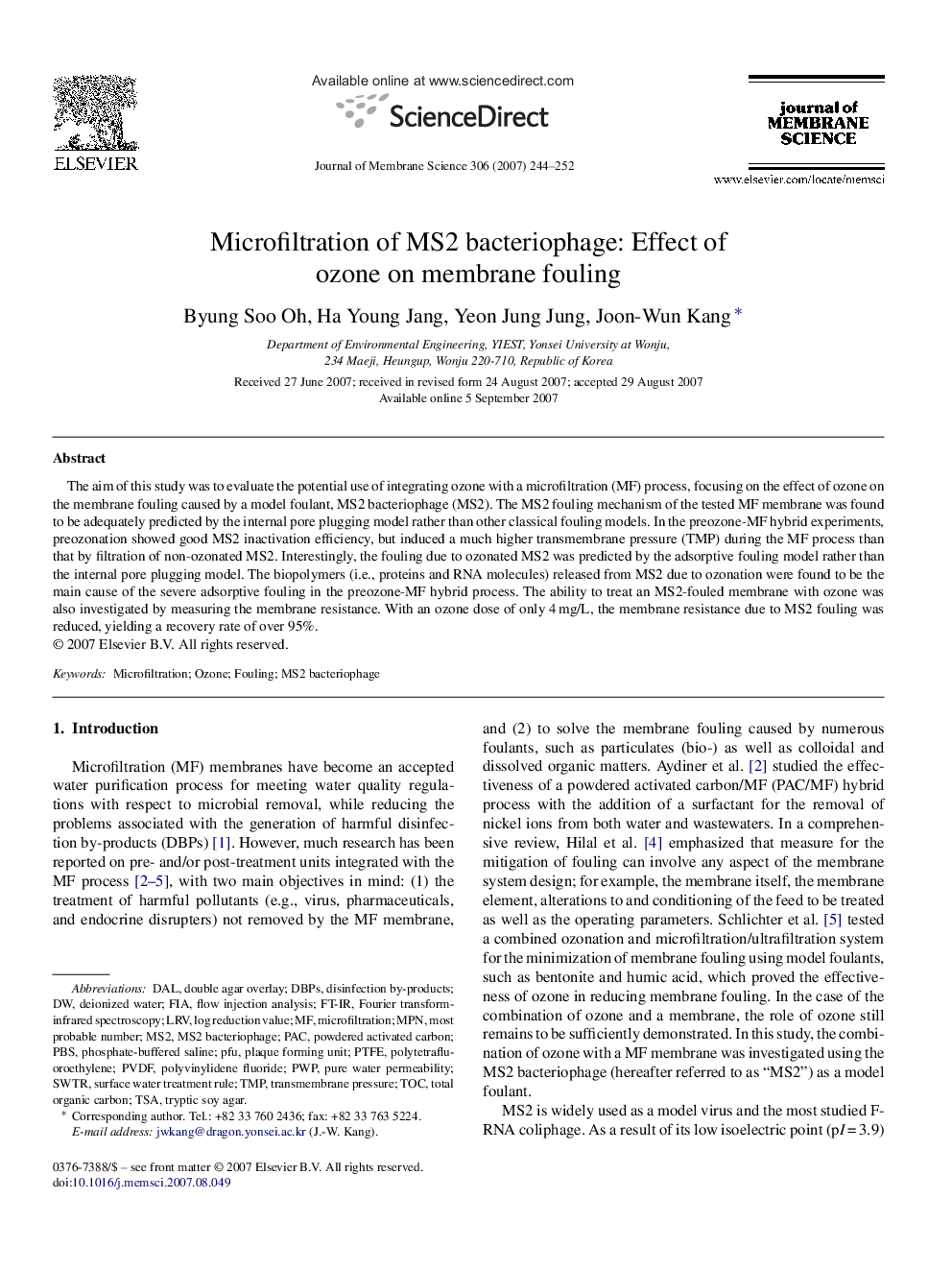| Article ID | Journal | Published Year | Pages | File Type |
|---|---|---|---|---|
| 638484 | Journal of Membrane Science | 2007 | 9 Pages |
The aim of this study was to evaluate the potential use of integrating ozone with a microfiltration (MF) process, focusing on the effect of ozone on the membrane fouling caused by a model foulant, MS2 bacteriophage (MS2). The MS2 fouling mechanism of the tested MF membrane was found to be adequately predicted by the internal pore plugging model rather than other classical fouling models. In the preozone-MF hybrid experiments, preozonation showed good MS2 inactivation efficiency, but induced a much higher transmembrane pressure (TMP) during the MF process than that by filtration of non-ozonated MS2. Interestingly, the fouling due to ozonated MS2 was predicted by the adsorptive fouling model rather than the internal pore plugging model. The biopolymers (i.e., proteins and RNA molecules) released from MS2 due to ozonation were found to be the main cause of the severe adsorptive fouling in the preozone-MF hybrid process. The ability to treat an MS2-fouled membrane with ozone was also investigated by measuring the membrane resistance. With an ozone dose of only 4 mg/L, the membrane resistance due to MS2 fouling was reduced, yielding a recovery rate of over 95%.
